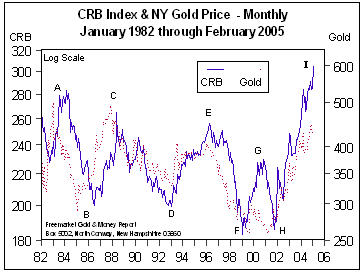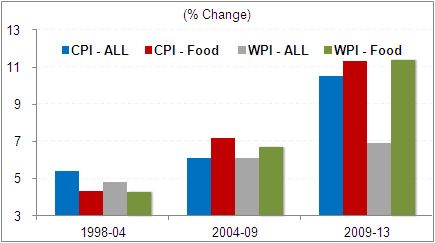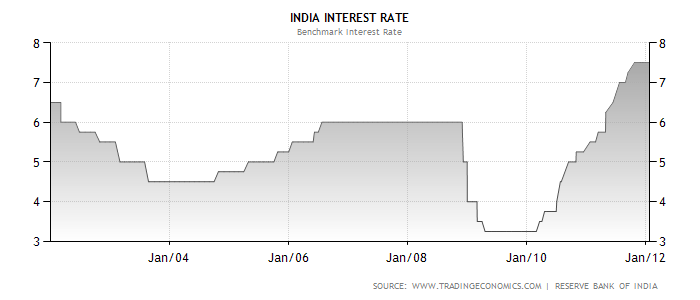panduranghari wrote:Suraj wrote:Could you please explain IMF clause II in more detail with a reference link to their site ?
Give me until evening. I will.
The clause 2 is basically 'the Second Amendment to the Articles of Agreement of IMF' agreed in 1978.
From
this link;
The Second Amendment to the Articles of Agreement in April 1978 fundamentally changed the role of gold in the international monetary system by eliminating its use as the common denominator of the post-World War II exchange rate system and as the basis of the value of the Special Drawing Right (SDR). It also abolished the official price of gold and ended its obligatory use in transactions between the IMF and its member countries. It furthermore required the IMF, when dealing in gold, to avoid managing the price of gold, or establishing a fixed price.
Transactions. The Second Amendment to the Articles of Agreement limit the use of gold in the IMF’s operations and transactions. The IMF may sell gold outright according to prevailing market prices. It may accept gold in the discharge of a member country's obligations (loan repayment) at an agreed price, based on market prices at the time of acceptance. Such transactions require Executive Board approval by an 85 percent majority of the total voting power. The IMF does not have the authority to engage in any other gold transactions—such as loans, leases, swaps, or use of gold as collateral—nor does it have the authority to buy gold.
Over the last six decades of the IMF’s existence, there have been several instances when the IMF has voted to return gold to member countries, or to sell some of its holdings. The reasons for this are varied: between 1957-70, the IMF sold gold on several occasions to replenish its holdings of currencies. During roughly the same period, some IMF gold was sold to the United States and invested in U.S. Government securities to offset operational deficits.
In December 1999, the Executive Board authorized off-market transactions in gold of up to 14 million ounces to help finance the IMF’s participation in the Heavily Indebted Poor Countries (HIPC) Initiative. Most of the gold was sold in transactions between the IMF and two members (Brazil and Mexico) that had financial obligations falling due to the IMF.
Obligating the eventual use of SDR by preventing the use of gold works in the interest of IMF.
The following bit is very critical -
It furthermore required the IMF, when dealing in gold, to avoid managing the price of gold, or establishing a fixed price
To manage the price of gold - they have the
LBMA
The gold and silver price auctions take place in London on a daily basis. The LBMA is responsible for the GOFO benchmark prices. All of these prices are globally regarded as the international benchmark for pricing of a variety of bullion transactions and products.
•The Gold price auction takes place twice daily by the London Gold Fixing Company at 10:30 and 15:00 and is expressed in US dollars per fine troy ounce. The prices are also available in £ and €.
•The LBMA Silver price auction is operated by CME and administered by Thomson Reuters and takes place daily at 12:00 noon London time. The price is expressed in $ per troy ounce. Reference prices are also available in £ and €. Disclaimer
•Gold Forward Rate Offered Rate or GOFO for short, is set daily at 11:00 expressed as a % in five tenors ranging between 1 month to 1 year.
The
CRB index also known as commodity research bureau index comprises of 19 commodities: Aluminum, Cocoa, Coffee, Copper, Corn, Cotton, Crude Oil, Gold, Heating Oil, Lean Hogs, Live Cattle, Natural Gas, Nickel, Orange Juice, Silver, Soybeans, Sugar, Unleaded Gas and Wheat.
According to this link -
http://www.fgmr.com/is-the-gold-price-b ... naged.html
Because it is money, gold is sensitive to inflation and prices, so when left unfettered, gold leads the CRB Index. Turning to the above table, you may recall that gold peaked in January 1980, several months before the peak reached by the CRB Index. It leads on the upside – gold peaked before the CRB in 1980. Gold also leads on the downside. Historically gold has bottomed before the CRB Index, as can be seen in the following chart:
 This chart presents both the month-end CRB Index and the spot New York gold price since January 1982. It's a dual scale chart, with gold's price on the right-hand scale and the CRB Index on the left.
This chart presents both the month-end CRB Index and the spot New York gold price since January 1982. It's a dual scale chart, with gold's price on the right-hand scale and the CRB Index on the left.
In the first years of this chart, the relationship between the CRB and gold is clear. Gold is leading the CRB both to the upside and downside (points A, B and C), which is the result to be expected. However, by the early 1990's their relationship changed significantly – gold was now lagging the CRB (note points D, E and F).
Point E is also noteworthy because gold's rise lagged that of the CRB Index. In other words, it appears that gold's advance in 1996 should have been much higher than the $405 price achieved, providing a substantial clue that the gold price was being managed to prevent gold from reaching its natural price level.
Further support for this conclusion comes from point G. Note that the CRB rose without any meaningful rise in the gold price. The results since then also lend credence to the argument that the gold price is being managed.
Quote- "Gold's failure to keep up with exploding commodity prices, as it did during the last commodities boom in 1980, is more powerful evidence of surreptitious intervention by central banks in the gold market."
To establish a fixed price, they started with London gold pool and now they have London gold fix. The gold fix is undertaken by only 4 agencies working together. They are;
1.Barclays
2.HSBC
3.Scotia-Mocatta (the global bullion banking division of Scotiabank)
4.Société Générale
Barclay got in after NM Rothschild decided to move out of gold business in a official capacity. They however bought majority stake in bullionvault.
link
From the IMF website again
In December 2010 the IMF concluded the gold sales program with total sales of 403.3 metric tons of gold (12.97 million ounces). Total proceeds amounted to SDR 9.5 billion (about $14.4 billion), of which SDR 6.85 billion constituted profits over the book value of the gold and SDR 4.4 billion of this was used to establish an endowment as envisaged under the new income model.
In February 2012, the Executive Board approved a distribution of SDR 700 million of reserves from windfall gold sales profits (realized because of a higher gold price than the assumed price when the new income model was endorsed by the Executive Board), subject to assurances that at least 90 percent of the amount would be made available for the Poverty Reduction and Growth Trust (PRGT). This distribution, which became effective in October 2012, was part of a financing package endorsed by the Executive Board to boost the IMF’s lending capacity.
In September 2012, the Executive Board approved a further distribution of SDR 1,750 million of reserves from windfall gold sales profits, subject to the same assurances that at least 90 percent of the amount would be made available for the PRGT, to ensure a longer-term sustainability of the PRGT. This distribution became effective in October 2013.
The successful distributions of gold windfall profits were a key step toward making the PRGT sustainable over the medium and longer term. As a result of the additional subsidy resources pledged, the PRGT now has sufficient capacity to accommodate annual lending of about SDR 1¼ billion on average on an ongoing basis.
The message is loud and clear. USE SDR. DONT USE GOLD. IF YOU ARE IN TROUBLE, COME TO US AND WE WILL GET YOU WHAT YOU NEED. TRY GOING DOWN THE GOLD STANDARD OR CONVERT GOLD INTO A CAPITAL BY TURNING IT TO CAPITAL ACCOUNT, WE WONT HELP YOU. We will actually put sanctions on you.
Why should China and Russia upset the IMF. They are able to buy gold under the radar and now SGE is going to go for settlement in gold even for futures contracts.




